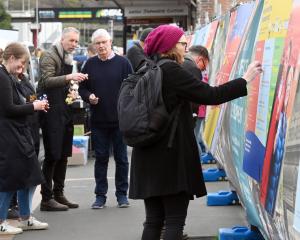Former Otago Museum director Henry Devenish Skinner was awarded a prestigious Rockefeller Foundation travelling fellowship in 1926.
These fellowships allowed recipients to study and travel in the United States for a year.
Skinner took his up in 1927, during which time he purchased the open-necked jar from western New Mexico on display in Otago Museum's People of the World gallery.
Skinner had a long-standing interest in the theoretical models used by North American anthropologists.
Publications by Clark Wissler, the American Museum of Natural History's curator of anthropology, had a particular impact on Skinner's work.
Wissler's support appears to have helped Skinner to win the Rockefeller Foundation fellowship.
He also assisted with early planning for Skinner's itinerary.
Skinner spent the first part of his Rockefeller Foundation fellowship in New York, visiting museums and attending lectures at Yale University, where Wissler then taught.
He also wanted to experience up-to-date archaeological fieldwork techniques, which led to a season of work with husband and wife team Cornelius and Harriet Cosgrove on their Schwartz Ranch site in New Mexico.
The Cosgroves directed the excavation on behalf of Harvard's Peabody Museum.
The artefacts they recovered included an important collection of prehistoric Mimbres pottery.
Harriet Cosgrove's illustrations of those painted pottery patterns were used as a reference work by contemporary artists and designers.
While working with the Cosgroves, Skinner must have visited the nearby Zuni Pueblo, where he paid $US1.50 for this jar made by one of the pueblo potters.
The people of Zuni Pueblo have been making pottery for their own use for hundreds of years, but modern painted Ashiwi (Zuni) pottery had been popular with collectors for some time by the 1920s.
Sun-dried polychrome pots featured hand-painted designs in black and red on a cream-coloured background.
The pots were fired in groups outdoors, each batch taking less than an hour.
While the style of this jar is traditional, the details and arrangements of the decorative motifs are unusual.
Dwight Lanmon, the co-author of a recent comprehensive publication on Zuni pottery, suggests it may have been made by a woman named Lawsaiyateseta Lonkeena, also known as Kaiyutsalugtetsa, who lived from about 1881 to 1958.
• Moira White is curator, humanities at Otago Museum.












